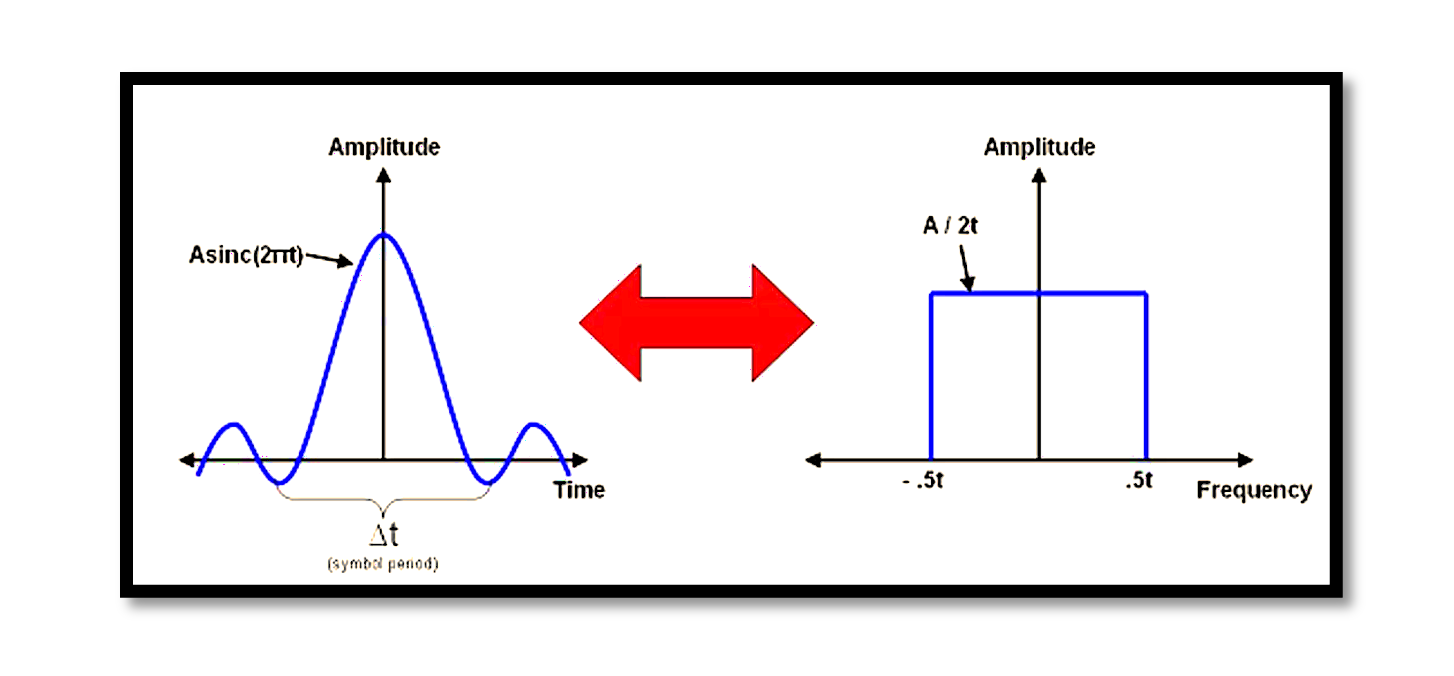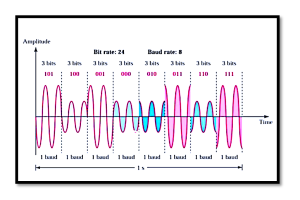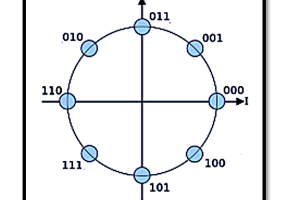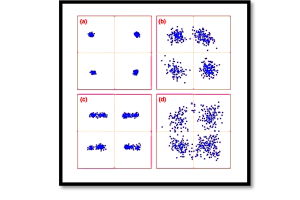
Solving Inter-Symbol Interference (ISI) in Digital Communication
Inter-symbol interference (ISI) is a critical challenge in digital communication systems, arising when overlapping symbols cause signal distortion, ultimately degrading system performance. This blog explores how ISI can be mitigated, focusing on methods illustrated in the provided slides: bandwidth-efficient pulse shaping and raised-cosine waveforms.
Understanding the Problem: ISI and Bandwidth
What causes ISI? When binary signals are transmitted, abrupt transitions between 0 and 1 (or -1 and 1) create wide bandwidths, as seen in rectangular pulses. These transitions lead to excessive high-frequency components, making the system more prone to interference and spectral inefficiencies.
Key insight: Reducing sharp transitions in pulses minimizes unnecessary bandwidth, thereby alleviating ISI.
Solution: Sinc Function for Pulse Shaping
To combat ISI, ideal pulse shaping uses the sinc function. The sinc pulse, characterized by its time-domain sinc waveform sinc(t)=sin(πt)\πt, has a compact and precise frequency response. This ensures minimal overlap between adjacent pulses.
Advantages of Sinc Pulses:
- Orthogonality: Perfect sinc pulses do not interfere with each other at sampling instants, eliminating ISI.
- Efficient Bandwidth Use: The rectangular frequency response confines energy within a desired range.
However, sinc pulses are challenging to implement in real systems due to their infinite extent.

Practical Alternatives: Raised-Cosine Waveforms
Since ideal sinc pulses are not feasible in practical systems, approximations like the raised-cosine pulse are employed. The raised-cosine waveform modifies the sinc function to provide similar benefits while being easier to generate.
Characteristics of Raised-Cosine Waveforms:
- Equation:

2. Frequency Response: For α=0, the response is ideal (like a sinc function).
Higher α widens the transition band, increasing tolerance to system imperfections.

Bandwidth Trade-offs:
The roll-off factor α determines the bandwidth efficiency and ISI mitigation. Lower α improves bandwidth efficiency, but at the cost of system tolerance to noise and filtering.
Visualization of Raised-Cosine Bandwidth
The raised-cosine pulse’s frequency response demonstrates how α controls the trade-off between bandwidth and spectral roll-off. For instance:
- α=0.17: Minimal excess bandwidth, close to ideal sinc.
- α=0.95: Wider bandwidth, offering robustness at the cost of spectral efficiency.

Raised-Cosine Waveforms: A Practical Solution
The raised-cosine pulse is widely adopted in modern communication systems because it provides a practical balance between spectral efficiency and ISI mitigation. Its key feature is the roll-off region, which allows for smooth transitions between symbols while maintaining orthogonality at sampling points. For example, in systems like 4G LTE or 5G, raised-cosine pulses are integral to ensuring that adjacent subcarriers in an orthogonal frequency-division multiplexing (OFDM) system do not interfere with each other. The roll-off factor α\alphaα offers a tunable parameter to optimize the trade-off between bandwidth efficiency and implementation complexity.
Future Trends in ISI Mitigation
As communication technologies continue to evolve, the demand for even more bandwidth-efficient and robust pulse-shaping techniques grows. Advances in machine learning and artificial intelligence are now being explored to optimize pulse design dynamically, tailoring waveforms to specific channel conditions in real time. Additionally, research into new modulation schemes, such as orthogonal frequency-division multiplexing (OFDM) and filter-bank multicarrier (FBMC) systems, seeks to address ISI by distributing data across multiple subcarriers. These techniques, combined with advanced pulse shaping, pave the way for next-generation communication systems capable of achieving unparalleled data rates and reliability.
The Broader Implications of ISI Mitigation
Mitigating ISI is not just about improving signal quality; it directly impacts the efficiency and scalability of communication systems. In an era where data demands are growing exponentially, every bit of bandwidth counts. Techniques like raised-cosine filtering enable networks to pack more data into the available spectrum, supporting applications like streaming, IoT, and real-time communication. By addressing ISI, communication systems can deliver higher data rates, lower latency, and improved reliability, making technologies like 5G, satellite internet, and beyond possible.
Take our entry level course (Below) for free using coupon code RAHRF101BLOG
RF Fundamentals, Basic Concepts and Components – RAHRF101
For limited time take an additional 10% off of all our courses using coupon code RFCERT10
Rahsoft RF Certificate and courses
Conclusion
Solving ISI requires designing pulses that minimize overlap in the time domain while efficiently utilizing bandwidth. While sinc pulses are ideal in theory, practical systems rely on raised-cosine waveforms, which strike a balance between feasibility and performance. Understanding these principles allows engineers to optimize communication systems for clarity, efficiency, and reliability, ensuring robust digital signal transmission even in challenging environments.

Learn more about this topic by taking the complete course ‘Introduction to Modulation in Communication Systems Online Course – RAHRF152’. Watch the course videos for more detailed understanding. Also checkout other courses on RF system and IC design on https://rahsoft.com/courses/. Rahsoft also provides a certificate on Radio Frequency. All the courses offer step by step approach.



